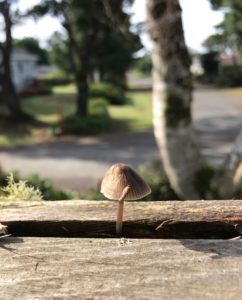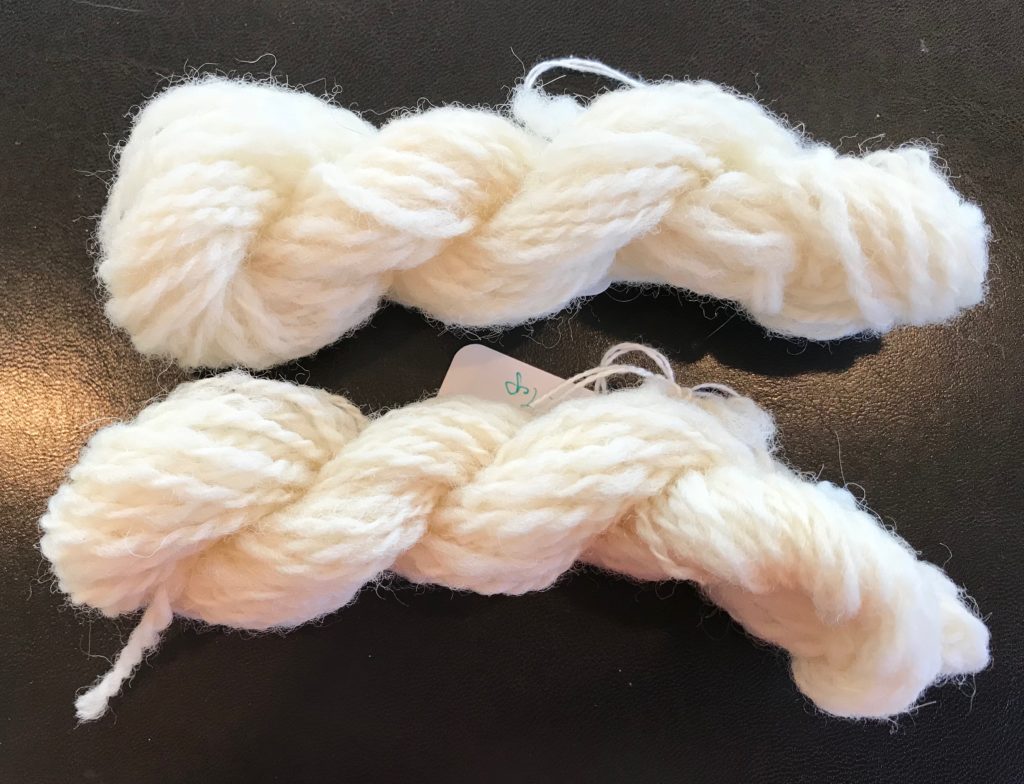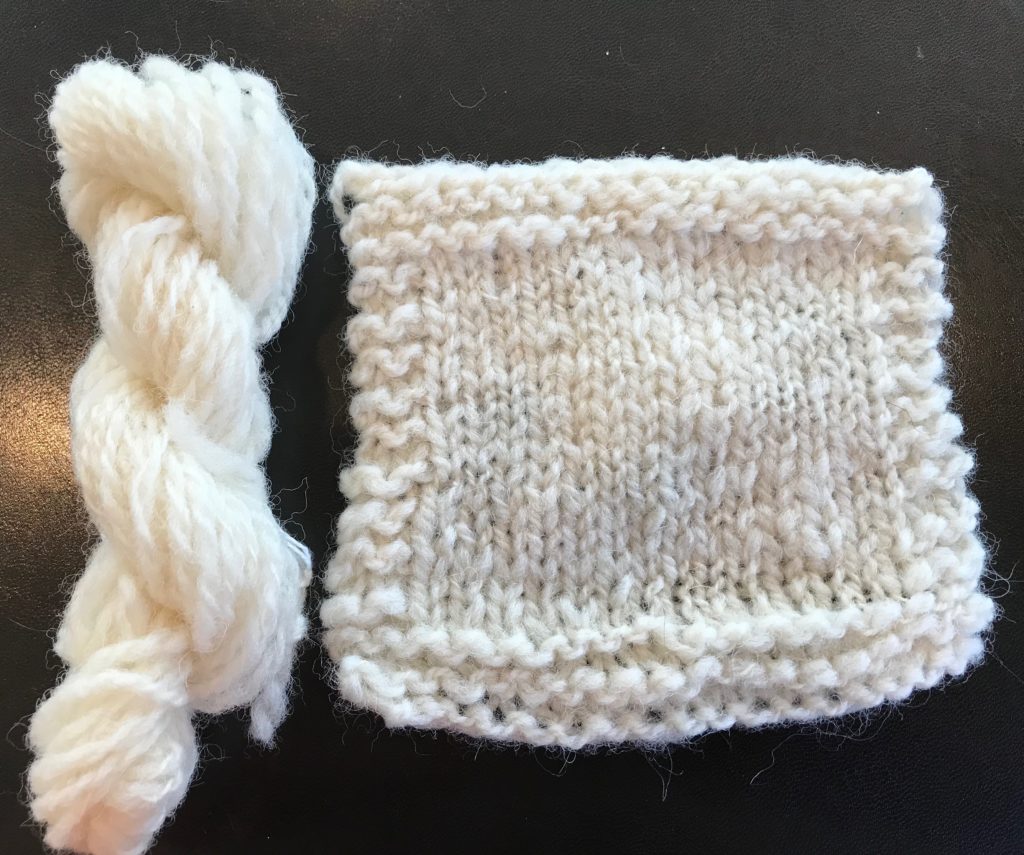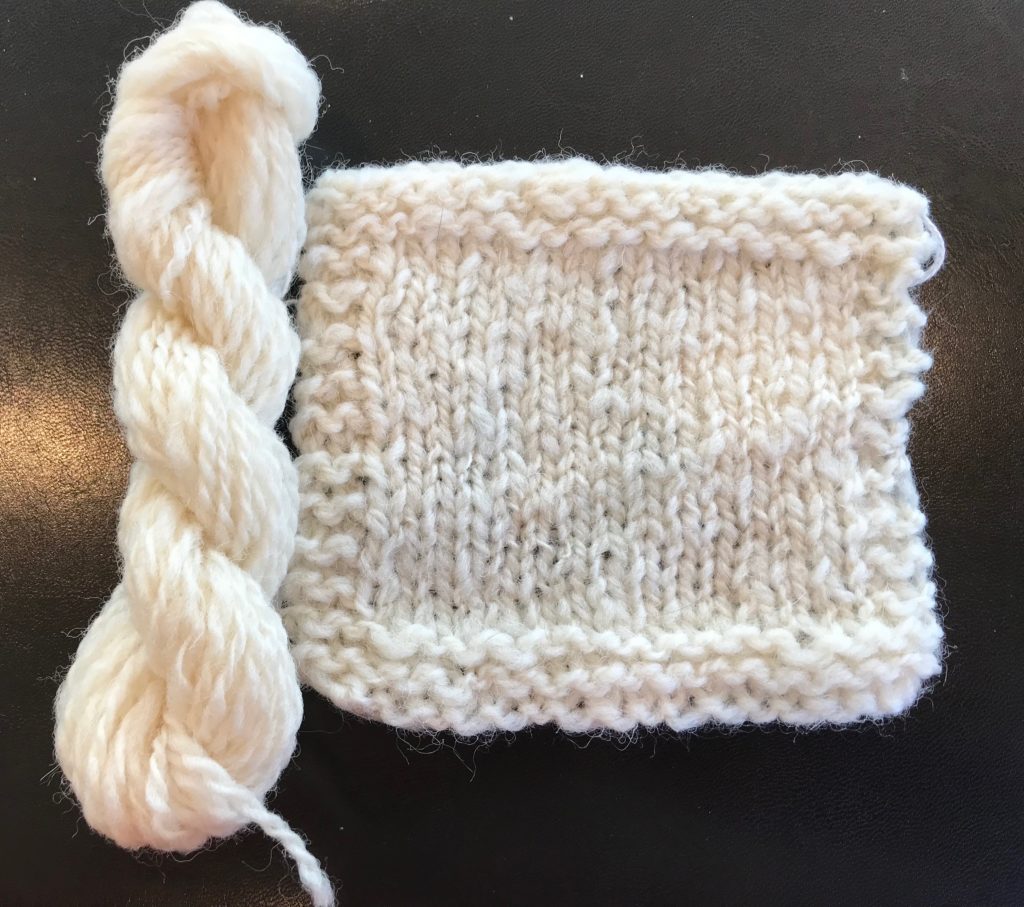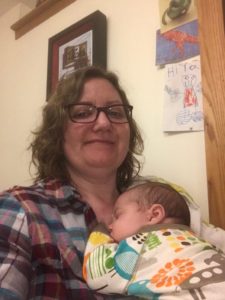
Sorry it’s been a while since I posted – I took a little trip up to Washington to see my brother and his family, and to meet my darling new niece and play Lego with my nephew. No time for blogging and spinning there!
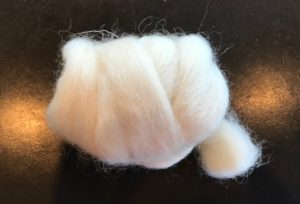
This post is all about playing with some Gotland locks I got last summer at Black Sheep Gathering. My breed study box did have a little roll of prepared “Gotland” top in it…but it’s white. One of the lovely things about Gotland sheep is that their coats are many lustrous shades of grey. Although there are breeders in Sweden upbreeding to get white fleeces (thank you, internet, for that bit of knowledge!), it seems pretty unlikely that that’s what I have. Which means it’s either been bleached or it’s not Gotland. There are a gazillion breeds that produce perfectly nice white longwools – why would you bleach Gotland!? It’s a mystery. Anyhow, I put the little ball back in the breed box. Since I had a bag of locks to play with, I used them for this experiment instead to get make sure I was getting a truly Gotland experience.
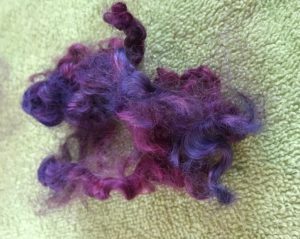
I started with the purple locks, which I picked into a cloud. I discovered quickly that if these locks had been washed before dying, they weren’t washed very well…so that was startling. There was a fair amount of waste, but plenty left to use. I will say that the array of shades of purple in these locks was fabulous! It was so much fun to see it all play together.
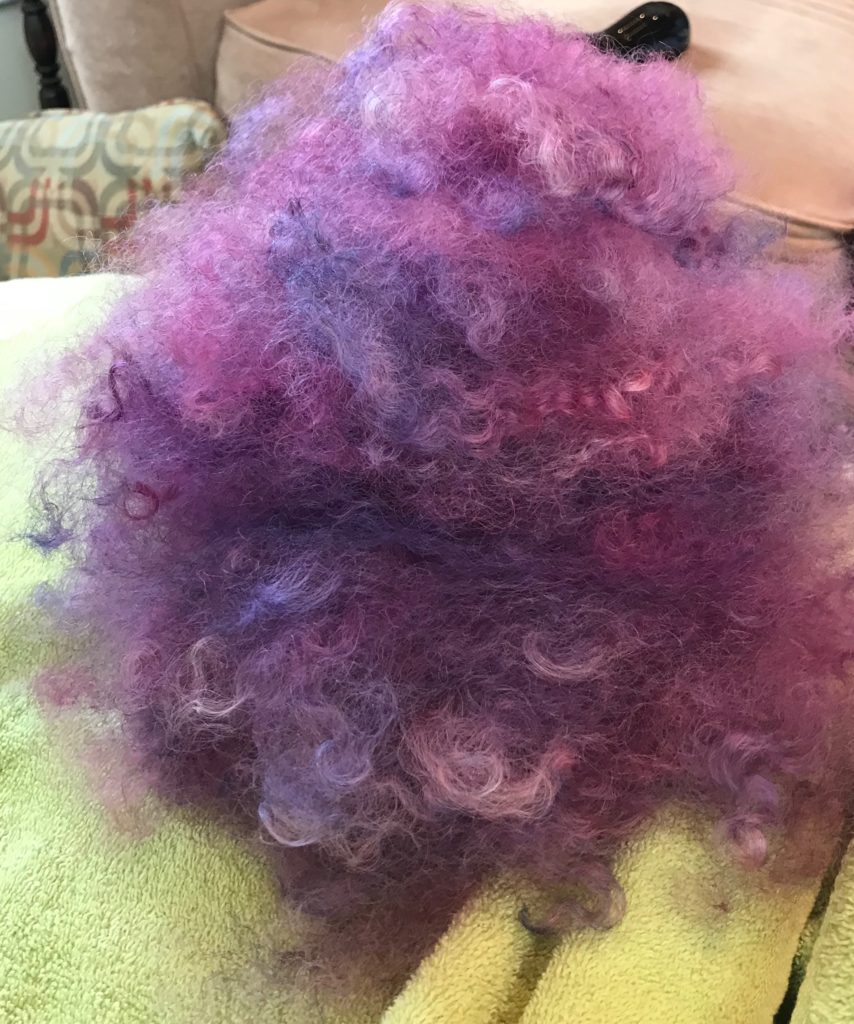
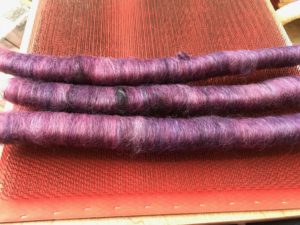
I put the locks on the blending board and carded them into rolags. What I learned was that I should have taken MUCH more time laying the fiber in, ensuring that it was more orderly. The staple is long enough that once it’s in a rolag it just knots up and doesn’t draft easily, which was pretty frustrating. I ended up using primarily a short forward draw even from a rolag, just because I had a little more control of the twist.
I Andean-plyed it into a two ply, and I ended up with a very hairy, slubby, textured yarn. I wound it into a ball and attempted to knit it. This yarn isn’t for knitting for me…it looks too messy. It might make a fine weft in weaving for someone, though!
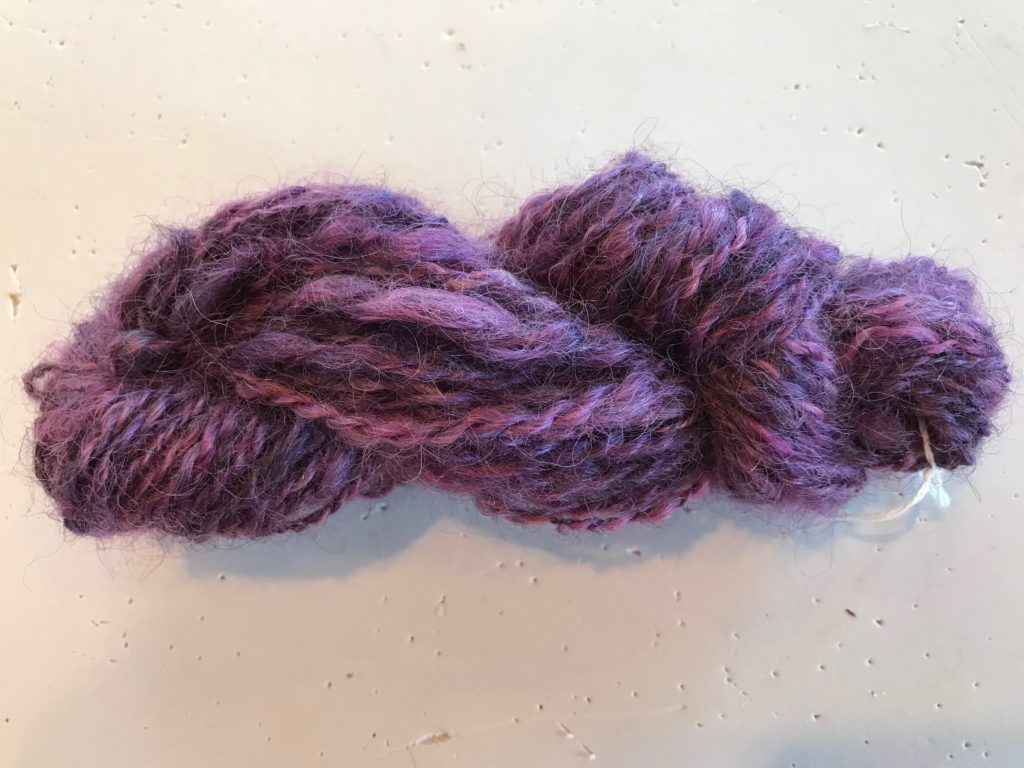
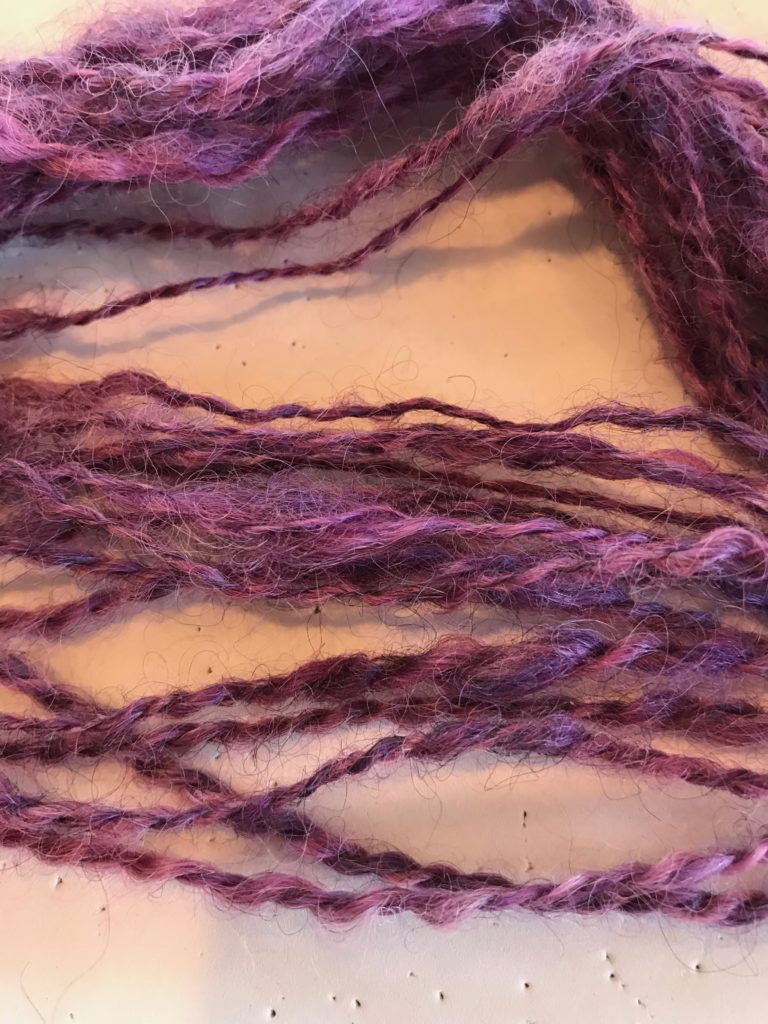
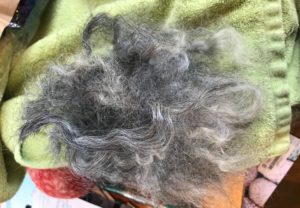
My next experiment was with the natural grey locks. I used my flicker and opened up the (also not super clean) locks, and spun directly from them. I tried to spin all the opened locks from the tip end. Being a longwool with such a nice shine, Gotland is also SLICK. I used a short forward draw so I could keep it all from sliding away from me. I wanted to see how smooth I could get the finished yarn so I chose not to spin from the fold, which would have been a more manageable way to handle the slippery locks. I was very surprised when my singles only broke once as I wound them onto my hand to Andean-ply. I didn’t have very much of this color, so I only ended up with about 14 yards of worsted weight yarn…definitely just a sample. It is smoother than what I spun from the cloud rolags, but still pretty hairy. I didn’t try to knit with it, but it’s definitely not next to skin soft. It’s also pretty underplyed – I was trying to keep it soft and not too much like twine…I think there’s a happy medium I missed somewhere.
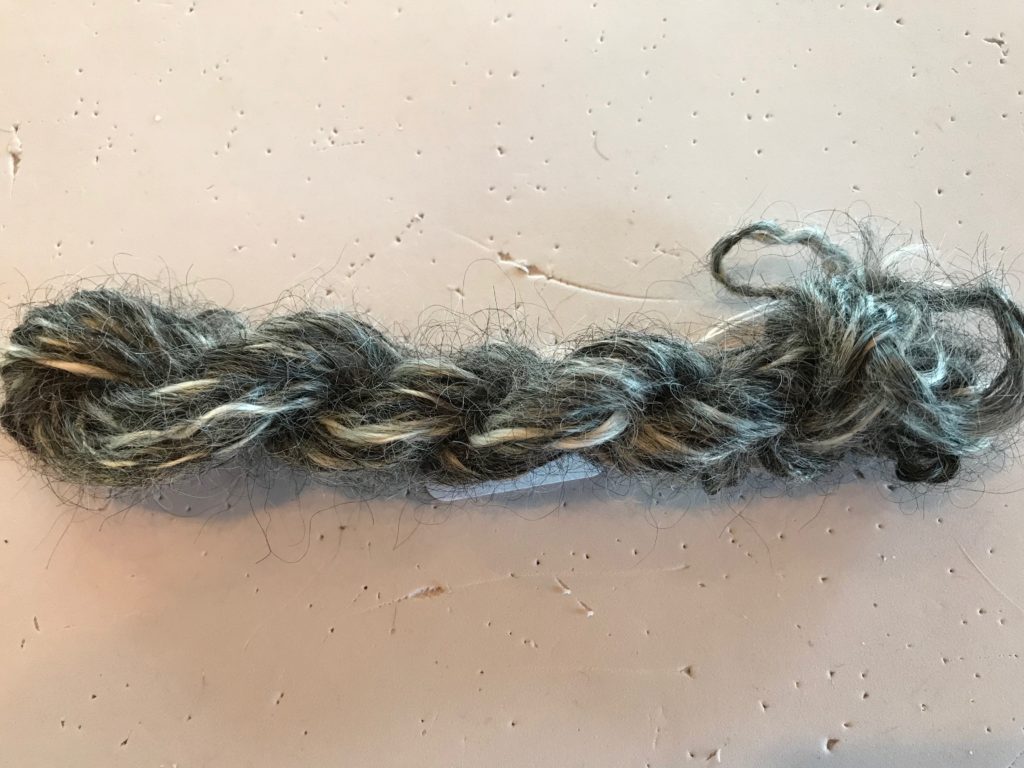
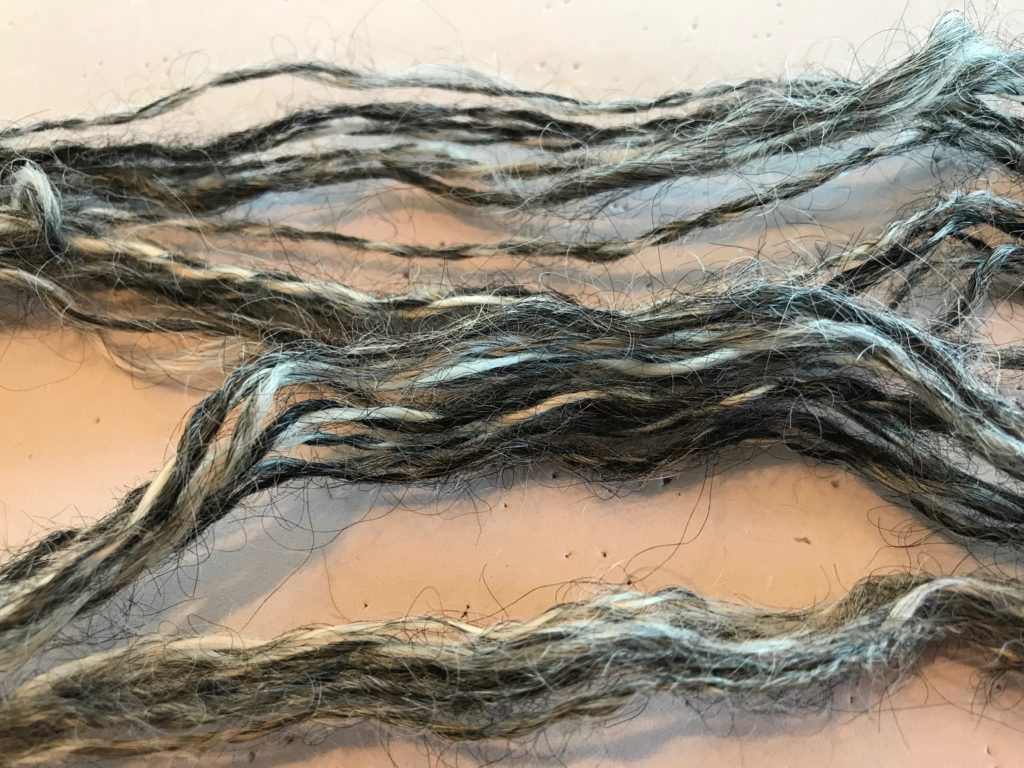
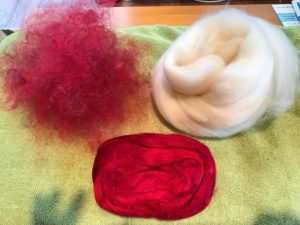 I had some locks left, and considered picking them and spinning from the cloud. In the end, though, I decided to make use of my blending board to blend some ecru Bluefaced Leicester (BFL) top, picked red Gotland locks, and red bamboo. There was a lot of waste in the locks this time too, so I just ended up with a little bit. I was diligent about how I laid the fiber into the board, and the resulting rolags were very nice and smooth.
I had some locks left, and considered picking them and spinning from the cloud. In the end, though, I decided to make use of my blending board to blend some ecru Bluefaced Leicester (BFL) top, picked red Gotland locks, and red bamboo. There was a lot of waste in the locks this time too, so I just ended up with a little bit. I was diligent about how I laid the fiber into the board, and the resulting rolags were very nice and smooth.
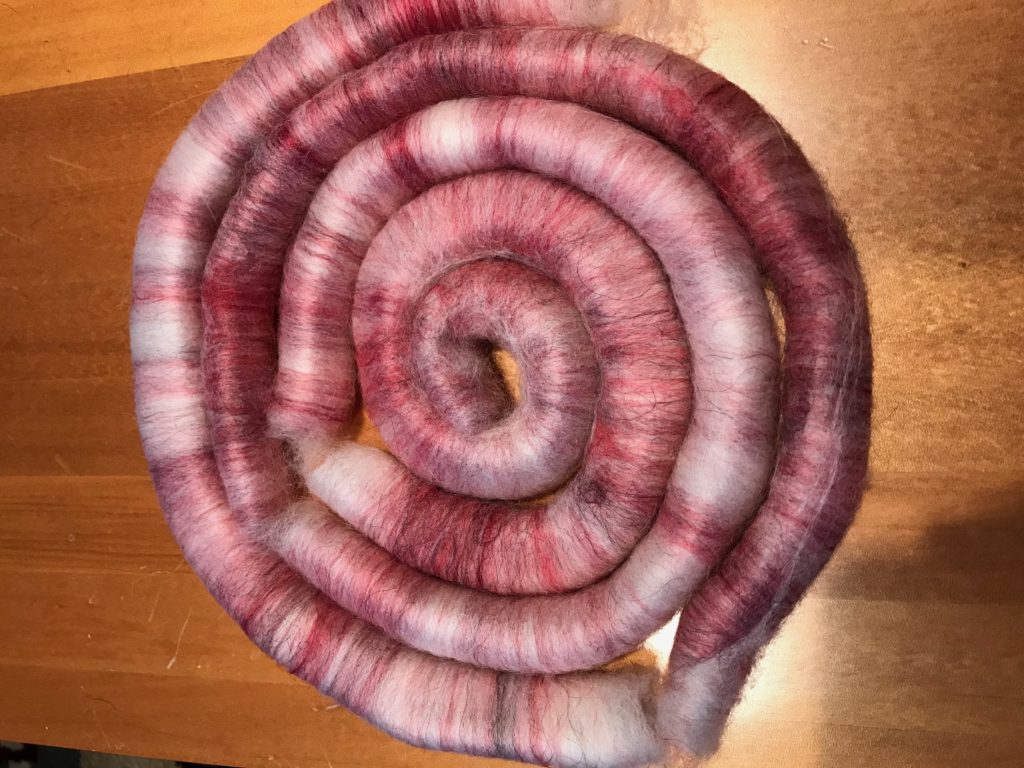
The Gotland fiber still got snarled up in the spinning a bit, and there were some neps in the BFL as well, but overall it was very nice to work with. Again I broke the rules and spun short forward draw from the rolags…I’ll still work on my long draw technique, but short forward is more relaxing because I do it well and I was feeling lazy.
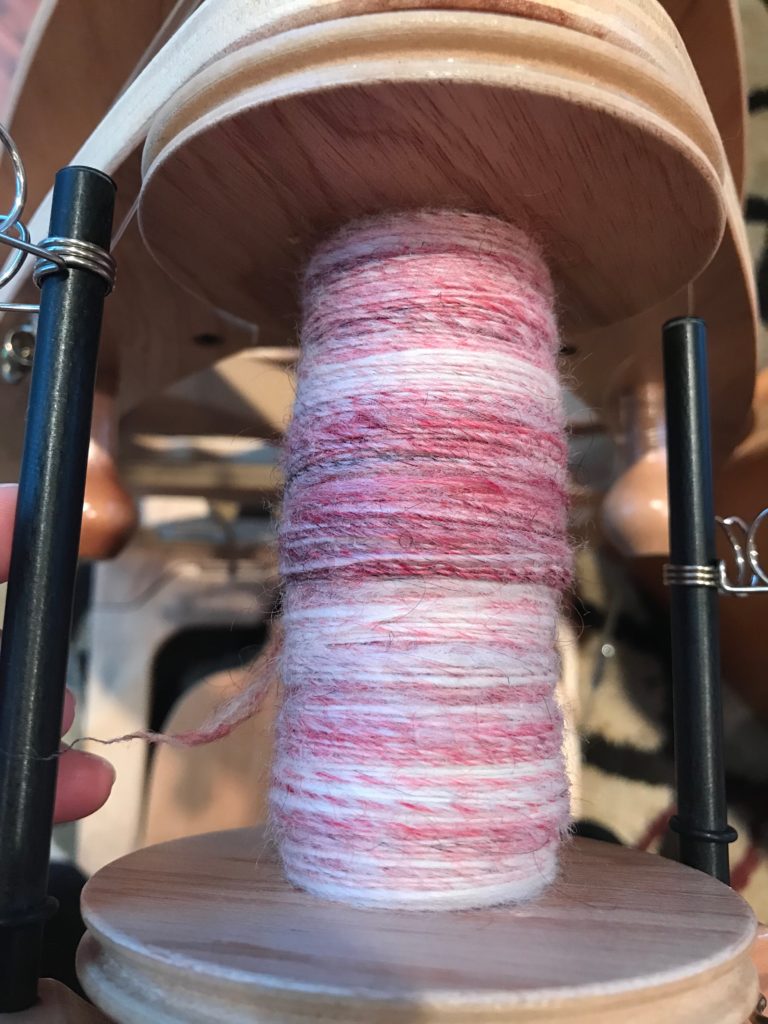
This yarn is still on the bobbin – It doesn’t have a lot of twist in it, and it’s all one piece so I either need to wind it off to Andean ply or into a center pull ball to ply that way. Or I can leave it as a singles yarn, but I’m not convinced it will hold together. I’m going to let it rest a bit to set that twist before I mess with it. More on that next time.

